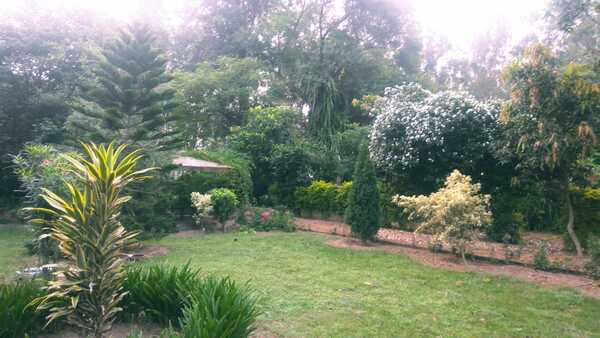Author: Randeep Singh / go to all articles on Yoga Concepts

Bhavas or Attitudes included in
our Shahzadpur Yoga Centre
With all our clients, at Shahzadpur
camps, we begin by guiding them
to get rid of the,
mental blockages which can hinder
the path of learning yoga.
Our Yoga in Shahzadpur camps training is meant to meet,
the real purpose of the training of yoga; the training of the subconscious mind. All our available trainings aim at developing a conscious mind. In yoga, the change or development has to happen at the Bhudhi level.
Yoga education is meant to be altering the practitioner’s belief system which affects the general motivation of the student of yoga. Buddhi is nearest to Purusha, as per the sequence Prakriti evolves as per Samkhya, and is composed of eight types of latent states of the subconscious or Bhavas: four positive and four negative in nature. Bhava is also known as attitude. The main effort of Yoga is to develop positive bhavas while eliminating the negative bhavas from the personality.
The positive bhavas are dharma ( self – direction), Jnana ( concentration), Vairagya (objectivity), Aishwarya (will power), their negative counterparts are adharma, ajnana, raga, Anaisvarya. We at our yoga classes at Shahzadpur, near Naraingarh, infuse these bhavas, or attitude with right action and alignment, into our techniques of teaching Yoga asanas. Yoga trains us on becoming aware of which bhava our buddhi or Intellect stays in most of the time and how to develop our proclivity towards the positive bhavas.
The techniques of Yoga which change the bhava of adharma to dharma brings calm, peace and clarity to the mind. These yoga techniques build up one’s relationships with others and with one’s own self. Dharma is about discipline which is an expression of buddhi. Jnana or concentration is another attitude which is lacking in most of us.
Our mind likes to concentrate only on objects and ideas which are interesting and would yield gains. Yoga techniques for concentration ( jnana bhava) train the mind to gain the ability to be able to focus on all tasks at the same time at will. Coordination and body awareness are the essence of the yoga techniques which come under Jnana Bhava.
We teach Talasana at our yoga classes in Shahzadpur to strengthen the jnana bhava within the practitioner. Knowledge can only be gained by the concentrated Mind with jnana bhava. One’s peace and clarity of mind has been attained by developing dharma bhava, knowledge through jnana bhava, the mind is ready for disinterestedness or vairagya towards the material world.
Vairagya bhava is the ability to detach one from everything, even one’s own body and look at things as they are, with objectivity. Objectivity, or removal of all that can affect one’s perception comes with the will power, the confidence the experience of which is the Aisvarya bhava. Doing a yoga asana by developing the bhava, feeling it comes under within oneself beforehand accelerates the transformation to the respective positive bhava.
Importance of Relaxation At our Yoga Center at Shahzadpur
The disease is congestion, the cure is circulation; tension causes congestion, the cure is relaxation. Relaxation is also the normal state the body is meant to be in. One type of relaxation is passive wherein the body goes limp and the mind stops working, other is where the mind and body are kept relaxed while they are active. Mind and brain are taken as different entities.
The second type is called a dynamic type of relaxation. One must learn both the art of passive and dynamic relaxation in case one wants to stay healthy in the toxic environment of modern living. Relaxation on its own is a bit difficult to achieve.
The best way is that the tense body must first do something active (yoga asanas) with the larger group of muscles in the body for calming down the nerves, only then the attempt at relaxation will fructify. The more perfect the effort , the more perfect is the relaxation.
At our yoga camps at Shahzadpur, near saha, we make our students relax with natural elements as well as yoga techniques like Nishpandbhava and conscious relaxation with Savasana right after the session on Yoga asanas is completed.
Our Yoga Camps in Shahzadpur end with Pranayama
In this scheme of eight steps of yoga, Patanjali has kept pranayama after the asanas. This is because in the process of purifying the Citta for meditation first the asanas are employed to purify the physical aspects and then the pranayamas purify the energy body of the aspirant of yoga. In yoga, the process of respiration is taken as the gross activity of prana or the bioenergy.
By controlling or regulating the respiratory process one can regulate the prana, which flows through the energy pathways in the body as per the Chinese philosophy. Acupressure points located on these pathways can be stimulated ( acupuncture) to control the flow of prana to a specific body region. Since the mind is nothing but packets of energy or prana ( thoughts) controlling the prana through the process of respiration can help control the mind.
The breathing becomes slow when the mind becomes steadier and vice versa. Patanjali in his yoga sutras has mentioned that Yoga is nothing but stoppage or arresting of the Citta Prana is the fuel for activating Citta, This fuel for Citta – prana- is controlled by the mind, thus one can control the Citta by controlling the prana and the mind by regulating the respiratory system through pranayama.
Read other Informative Articles….
All about Tinnitus, Ringing Ears Problem
